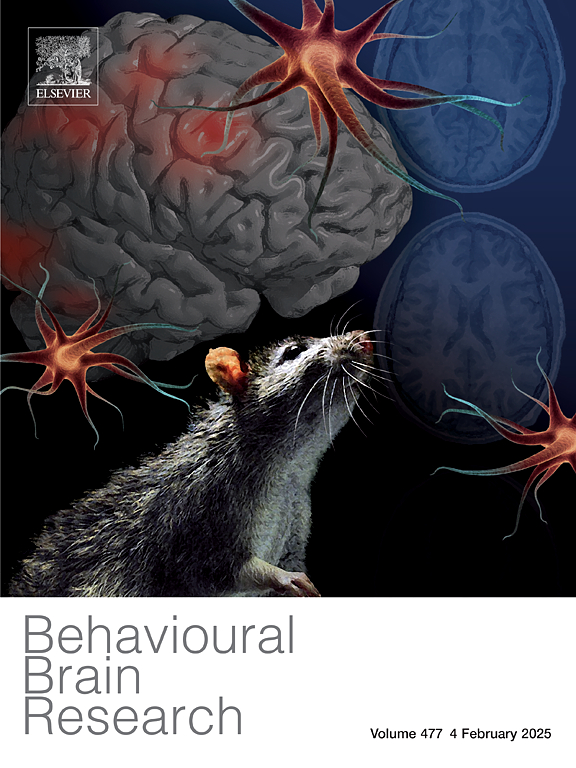Appetitive and aversive classical conditioning: Self-reports and physiological responses
IF 2.6
3区 心理学
Q2 BEHAVIORAL SCIENCES
引用次数: 0
Abstract
Understanding the neural mechanisms underlying appetitive and aversive conditioning has important clinical implications because maladaptive associative learning processes are thought to contribute to various mental disorders, including anxiety, mood and eating disorders, as well as addiction and chronic pain. Since brain areas related to appetitive and aversive conditioning overlap with one another, but are probably also distinct, it is of interest to directly compare appetitive and aversive conditioning in behavioral and imaging studies. To what extent do behavioral outcome recordings in appetitive and aversive conditioning tasks match? We compared self-reports and physiological responses (skin conductance responses and pupil size) using commonly applied appetitive and aversive unconditioned stimuli (US) in 40 young and healthy participants (20 women). Different to animal studies, secondary reinforcers, particularly monetary rewards, are most commonly used as appetitive US in humans. Therefore, the first study compared self-reports and physiological assessments that were elicited by electric shock and three monetary rewards (one Euro, two Euros and five Euros). In the second study, differential aversive and appetitive conditioning were performed on two consecutive days with order being randomized between participants. Since outcome measures of electric shock best matched the one Euro reward, one Euro was used as US in the appetitive conditioning paradigm. In both studies, physiological responses were significantly lower towards appetitive conditioned stimuli (CS) and US compared to aversive CS and US (all p-values < 0.001). Self-reports, on the other hand, showed much fewer differences in response magnitude and differential CS responding comparing appetitive and aversive CS and US. Overall, self-reports of valence were higher towards monetary rewards compared to the electrical stimulus considering both responses to the US in study 1 and CS in study 2 (p-values < 0.001). Our findings show that full comparability between behavioral outcomes can probably not be achieved in appetitive and aversive conditioning paradigms since outcomes might easily diverge. Future studies comparing the neural responses in processing of aversive and appetitive stimuli using brain imaging, electroencephalography or other neurobiological methods need to control for possible differences in response magnitudes and learning rates.
求助全文
约1分钟内获得全文
求助全文
来源期刊

Behavioural Brain Research
医学-行为科学
CiteScore
5.60
自引率
0.00%
发文量
383
审稿时长
61 days
期刊介绍:
Behavioural Brain Research is an international, interdisciplinary journal dedicated to the publication of articles in the field of behavioural neuroscience, broadly defined. Contributions from the entire range of disciplines that comprise the neurosciences, behavioural sciences or cognitive sciences are appropriate, as long as the goal is to delineate the neural mechanisms underlying behaviour. Thus, studies may range from neurophysiological, neuroanatomical, neurochemical or neuropharmacological analysis of brain-behaviour relations, including the use of molecular genetic or behavioural genetic approaches, to studies that involve the use of brain imaging techniques, to neuroethological studies. Reports of original research, of major methodological advances, or of novel conceptual approaches are all encouraged. The journal will also consider critical reviews on selected topics.
 求助内容:
求助内容: 应助结果提醒方式:
应助结果提醒方式:


